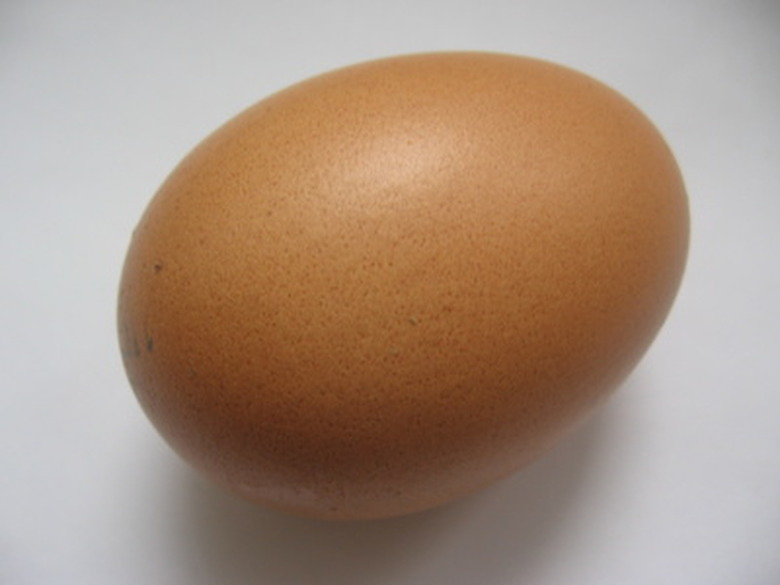Science Project On How To Float An Egg
Floating an egg in a beaker of water is a classic science project that illustrates Archimedes' Principle. The buoyant force–the force making the egg float–is equal to the weight of the fluid the object displaces. To make the egg float, you simply make the water "heavier" by increasing its density using a soluble substance such as salt.
Preparation
Preparation
You will need eggs, water and salt. Gather a number of beakers large enough–500 mL is good–to hold the water and the eggs. You also need a scale to weigh the eggs and the salt. The number of beakers will depend on how many variables you want to analyze. Three is a good number if you're interested only in the mass of salt needed to float the egg. If you also want to consider water volume, you'll need at least four, but six will give you more data points.
Setup
Setup
Fill each beaker with enough water to cover an egg. If you are using 500 mL beakers, 300 mL of water will work. If you want to see the effect of water volume on the experiment, fill another set with 200 mL of water. Label the beakers, and make a chart to record data. Weigh each egg and record its weight in the chart with its beaker. Weigh out 5 g of salt, then use a measuring spoon once you know the volume. That way you won't have to weigh out the salt every time.
Experiment
Experiment
Add 5 g of salt at a time to each beaker. Keep a good count of the amount of salt you add. When the eggs become suspended in the middle of the water in one beaker, continue adding salt to the other until the egg floats. Record how much salt you added to each beaker on your chart.
Report
Report
Once you've collected the data, you have to figure out what it means. One way to help with that is to create a hypothesis based on your data, test it and see how close your hypothesis was. Try floating objects other than eggs, and see if you can figure out how much salt it will take to lift it. Try a series of water volumes, such as 250 mL, 350 mL and 450 mL, and see if you can guess what will happen. The point of science is discovery, so what you try to discover after you have conducted the initial experiment is probably the most important part of the project.
References
Cite This Article
MLA
McKenzie, Grant D.. "Science Project On How To Float An Egg" sciencing.com, https://www.sciencing.com/science-project-float-egg-5397687/. 24 April 2017.
APA
McKenzie, Grant D.. (2017, April 24). Science Project On How To Float An Egg. sciencing.com. Retrieved from https://www.sciencing.com/science-project-float-egg-5397687/
Chicago
McKenzie, Grant D.. Science Project On How To Float An Egg last modified August 30, 2022. https://www.sciencing.com/science-project-float-egg-5397687/
